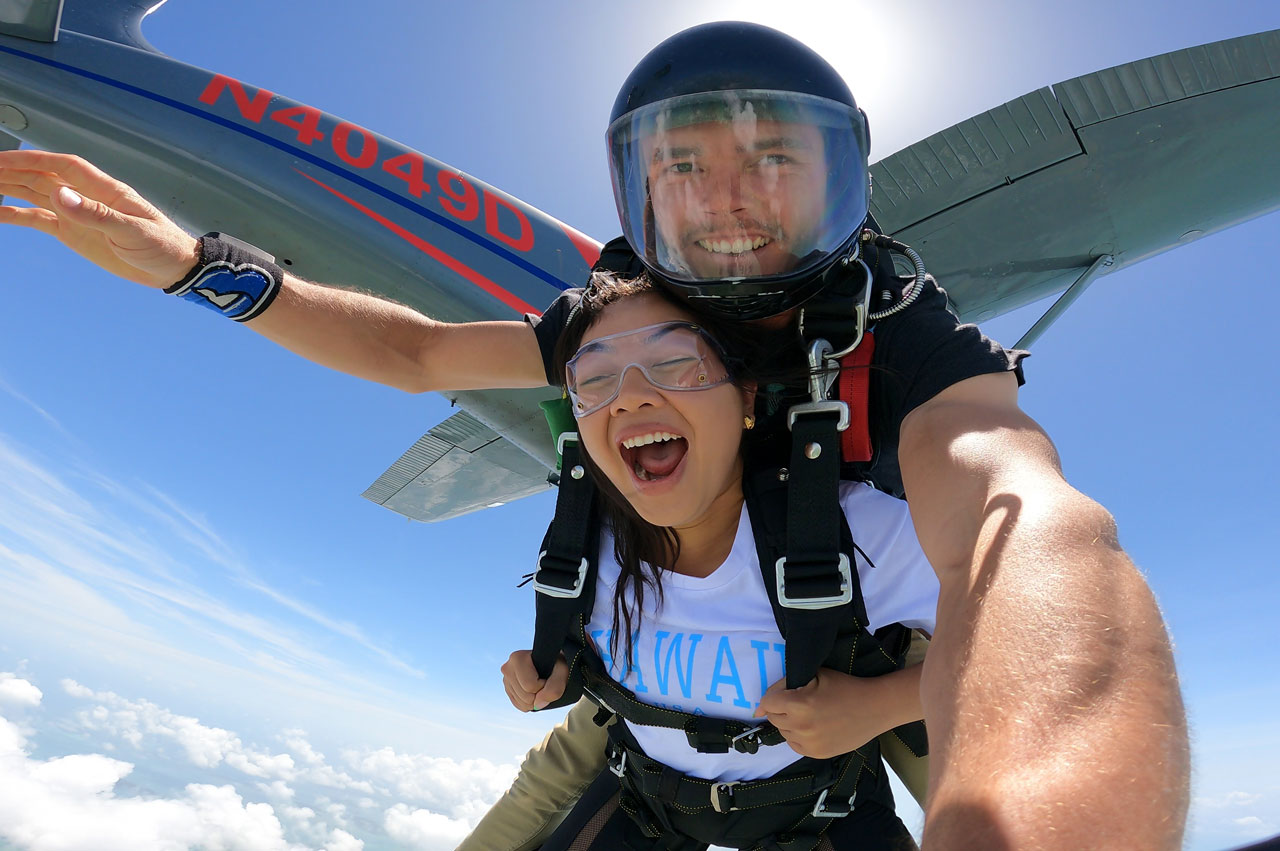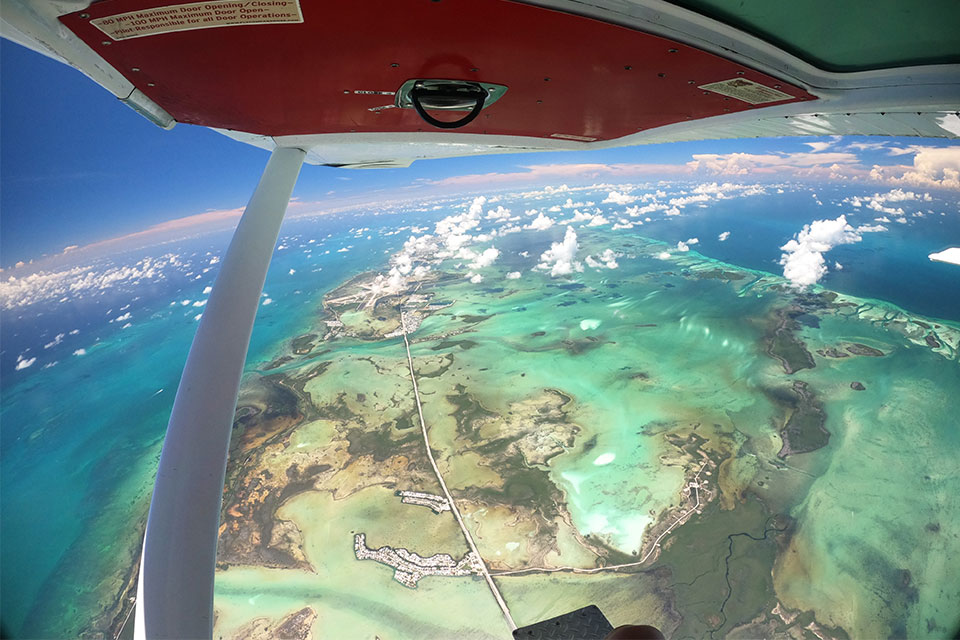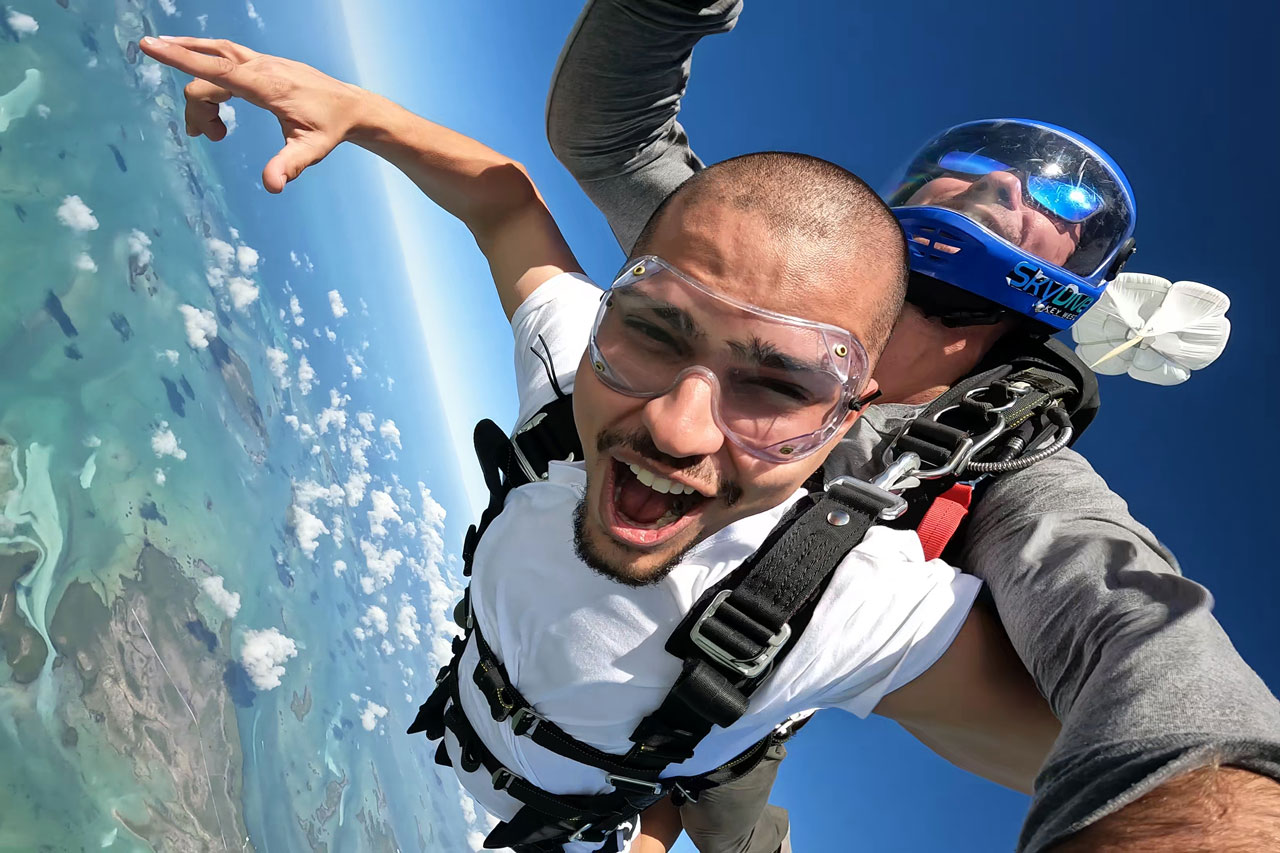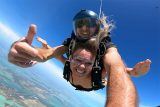Tandem Skydiving Gear and Equipment
Tandem Skydiving
Posted by: Skydive Key West
2 years ago
If you’re interested in taking a leap of faith into the world of skydiving, you’ll want to be sure that you are putting your trust in good hands. At Skydive Key West, we are dedicated to ensuring our guests feel comfortable and confident while embarking on their tandem skydiving adventure, which is why we believe it’s important to share about our tandem skydiving equipment. While you don’t need to be a gear expert, understanding basic skydiving equipment information can help you feel more secure and informed as you prepare for your tandem jump.

Do You Wear a Helmet When Tandem Skydiving?
Helmet or no helmet?
In doing your research on tandem skydiving, you may notice that some instructors wear helmets, while tandem students generally do not. Helmets are an essential part of the skydiving equipment list for licensed skydivers who engage in more advanced maneuvers, where the risk of collisions in the sky or on the ground is much higher.
For tandem students, the tandem harness and expertise of the instructor are sufficient for a successful (and super fun) skydiving experience. Tandem jumps are designed to be straightforward, with the instructor taking the lead and the tandem student securely harnessed in front of the instructor.
It’s unnecessary for tandem students to wear a helmet, and actually wearing one is more dangerous. Why do tandem skydivers not wear helmets? Due to the positioning of the tandem student, the helmet could impact the instructor’s vision, or worse, potentially knock your instructor unconscious. Yikes! And – bonus – the absence of a helmet gives the student a totally unobstructed view of the sparkling turquoise waters of the Florida Keys!

Tandem Skydiving Equipment List
What Equipment is Needed for Skydiving?
Skydiving is a sport that relies on well-maintained and reliable skydive gear. Which is why our crew of safety-conscious, passionate pros make sure all of our top-of-the-line skydiving equipment is in tip-top shape! We actually have multiple Federal Aviation Administration (FAA) certified parachute riggers right here on-site whose job is to routinely inspect and maintain each and every skydiving rig.
Skydiving gear for beginners is less complicated than that of an experienced skydiver. While you, as a tandem student, aren’t responsible for handling any of the skydiving equipment, it’s a good idea to familiarize yourself with the equipment to understand what to expect when you go skydiving. Knowing what’s what can help you soothe anxiety too – whether it’s your own or that of your loved one’s who isn’t stoked about the idea of you skydiving.
Here’s the skydive gear that you might see and/or use while on your tandem skydive:
Goggles
Skydiving goggles are your first line of defense against the wind’s antics and any other flying debris that tries to make its way into your precious peepers. They’re designed to shield you from the elements and keep you comfy so you can savor every heart-pounding moment of your adventure while enjoying the breathtaking scenery below.
Altimeter
An altimeter is your altitude tracker, guiding your instructor through the skies! The altimeter uses barometric pressures to determine your altitude as you descend. Once you reach a certain altitude, the instructor will know it is time to pull the parachute and when to initiate different aspects of the landing pattern.
Adjustable Harness
The tandem harness offers safety and comfort by securely connecting you to your instructor and the tandem rig. The tandem harness can adjust to fit most height-and-weight proportionate bodies snugly and safely. The gear manufacturer places weight limits on the gear as a safety precaution, which is one of the main reasons why the weight limit at Skydive Key West is a hard 270 lbs. If you’re unsure about how the harness will fit you, give us a call!

Tandem Rig
The tandem rig is the heart of your skydive gear, connecting you to your instructor and housing the essential, life-saving parachutes. It ensures a secure, two-person setup for a successful and comfortable freefall and parachute ride.
Two-Parachute System
Within the tandem rig, there are two types of parachutes for skydiving: the main parachute and the reserve parachute.
The main parachute is your primary skydiving parachute that is in charge of getting you safely to the ground. Tandem parachutes are usually bigger in size to accommodate the weight of two skydivers (you and your instructor) and to ensure a gentle landing.
The reserve parachute is essentially a back-up parachute should anything malfunction with the main parachute. Reserve parachutes must be inspected and packed by certified parachute riggers every 180 days, regardless of whether they’ve been used or not. Although the reserve parachute is rarely needed, it is a dependable reinforcement just in case.
Reserve Static Line (RSL)
The RSL is in charge of automatically deploying the reserve parachute in emergency situations. Should the skydiver need to perform the emergency procedure sequence, the reserve parachute deployment will be initiated by the RSL as soon as the cutaway handle is pulled and the main parachute is released.
Automatic Activation Device (AAD)
The skydiving AAD is your ultimate safety net. Should the skydiver be unable to complete their emergency procedures for whatever reason by a certain altitude and speed, the AAD will automatically activate the reserve parachute deployment sequence.
Now that you know the ins and outs of tandem skydiving gear and equipment, let’s go skydiving in Key West – one of the best places to skydive in the US! We’ve got meticulously maintained, best-in-class gear, instructors of the highest caliber, and an unreal ocean views. You’re ready to soar above literal paradise! Book your tandem skydive with Skydive Key West. Blue skies!




